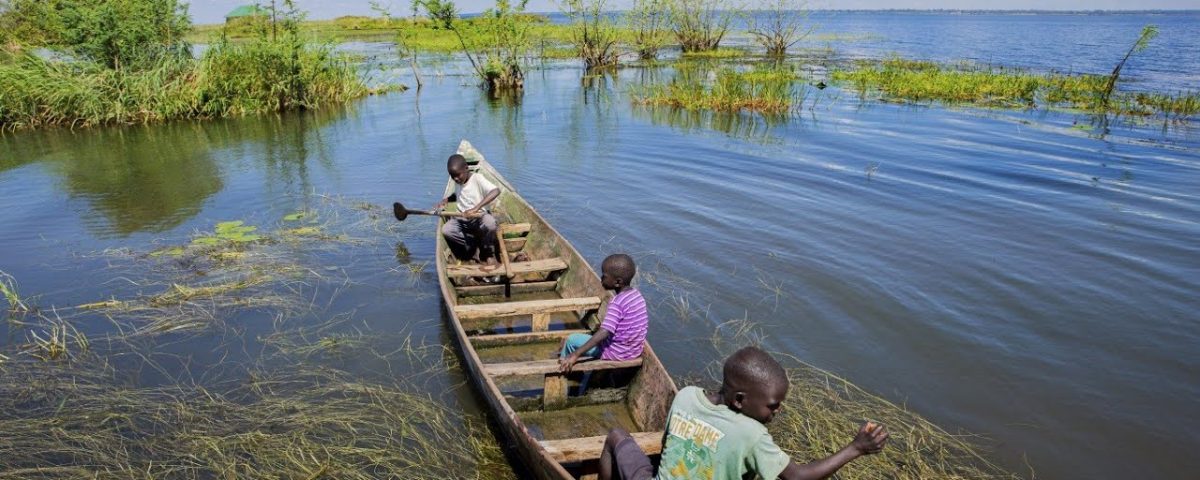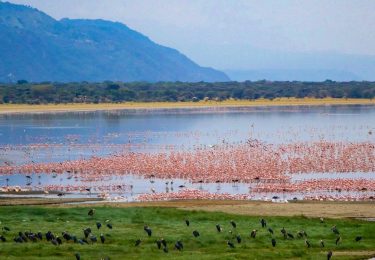- Home
- About Us
- Uganda safaris
- Long Safaris
- Short Safaris
- Day Short Safaris
- 1 Day Entebbe Botanical gardens weekend birding excursion
- I Day Entebbe City Tour
- 1 Day Jinja, Mabira, Ssezibwa Tour
- 1 Day Jinja Source of the Nile tour
- Lake Victoria Sunset Cruises
- 1 Day Kampala City Tour
- 1 Day Mabamba Shoebill Stork And Birding Tour
- 1 Day Makanaga Shoebill And Birding Trip
- 1 Day Ngamba Island Boat And Chimpanzee Excursion
- Other Tours
- Gorilla Safaris
- Uganda Gorilla safaris
- 4 Days Mgahinga Bwindi gorilla and golden monkey trekking safari
- 3 Days Mgahinga Gorilla trekking safari
- 5 Days Mgahinga Gorillas, Golden Monkey And Lake Bunyonyi Tour
- 5 Days Gorillas And Wildlife, L.Mburo, Bwindi and L. Bunyonyi
- 8 Days Wildlife, Gorillas, Golden Monkeys Trip
- 8 Days Gorillas Chimpanzee and wildlife Trekking Tour
- 9 Days Kidepo Valley National park and Bwindi Gorilla Safari. Wildlife and gorillas
- 11 Days Gorilla And Chimpanzee Tracking and wildlife Safari
- Rwanda Gorilla Safaris
- Uganda Gorilla safaris
- National Parks
- Kidepo Safaris
- Queen Elizabath Safaris
- Lake Mburo Safaris
- Mgahinga
- Mgahinga Gorilla National Park
- 3 Days Mgahinga Gorilla trekking safari
- 4 Days Mgahinga Bwindi gorilla and golden monkey trekking safari
- 5 Days Rwand-Uganda Gorilla, Golden Monkey trekking trip
- 5 Days Mgahinga Gorillas, Golden Monkey And Lake Bunyonyi Tour
- 8 Days Wildlife, Gorillas, Golden Monkeys Trip
- Our Blog
- Other Safaris
- Home
- About Us
- Uganda safaris
- Long Safaris
- Short Safaris
- Day Short Safaris
- 1 Day Entebbe Botanical gardens weekend birding excursion
- I Day Entebbe City Tour
- 1 Day Jinja, Mabira, Ssezibwa Tour
- 1 Day Jinja Source of the Nile tour
- Lake Victoria Sunset Cruises
- 1 Day Kampala City Tour
- 1 Day Mabamba Shoebill Stork And Birding Tour
- 1 Day Makanaga Shoebill And Birding Trip
- 1 Day Ngamba Island Boat And Chimpanzee Excursion
- Other Tours
- Gorilla Safaris
- Uganda Gorilla safaris
- 4 Days Mgahinga Bwindi gorilla and golden monkey trekking safari
- 3 Days Mgahinga Gorilla trekking safari
- 5 Days Mgahinga Gorillas, Golden Monkey And Lake Bunyonyi Tour
- 5 Days Gorillas And Wildlife, L.Mburo, Bwindi and L. Bunyonyi
- 8 Days Wildlife, Gorillas, Golden Monkeys Trip
- 8 Days Gorillas Chimpanzee and wildlife Trekking Tour
- 9 Days Kidepo Valley National park and Bwindi Gorilla Safari. Wildlife and gorillas
- 11 Days Gorilla And Chimpanzee Tracking and wildlife Safari
- Rwanda Gorilla Safaris
- Uganda Gorilla safaris
- National Parks
- Kidepo Safaris
- Queen Elizabath Safaris
- Lake Mburo Safaris
- Mgahinga
- Mgahinga Gorilla National Park
- 3 Days Mgahinga Gorilla trekking safari
- 4 Days Mgahinga Bwindi gorilla and golden monkey trekking safari
- 5 Days Rwand-Uganda Gorilla, Golden Monkey trekking trip
- 5 Days Mgahinga Gorillas, Golden Monkey And Lake Bunyonyi Tour
- 8 Days Wildlife, Gorillas, Golden Monkeys Trip
- Our Blog
- Other Safaris
LAKE BISINA

KISIIZI FALLS
September 19, 2024
LAKE BUNYONYI
September 19, 2024Lake Bisina, situated approximately 15 kilometers from Kumi District along the Kumi-Soroti road, was recognized as a Ramsar World Heritage Site on September 15, 2006. This pristine lake is the crown jewel of the Teso Region, boasting crystal-clear waters that reflect the vibrant hues of the surrounding landscape. As the heart, soul, and lifeline of the surrounding communities, Lake Bisina supports a diverse array of flora and fauna, making it a true natural wonder.
The lake’s sparkling waters are home to an abundance of wildlife, including various fish species, birds, and other aquatic life. Its connection to Lake Opeta via a vast marsh creates a unique wetland system, which ultimately drains into Lake Kyoga. This intricate network of waterways is crucial to the ecosystem of Eastern Uganda, situated between two predominantly dry areas.
The wetland system of Lakes Bisina and Opeta provides a permanent source of fresh water for the local population, supporting agriculture, livestock, and domestic use. Additionally, it serves as a vital habitat for numerous plant and animal species, many of which are found nowhere else in the region.
The recognition of Lake Bisina as a Ramsar World Heritage Site acknowledges its international importance as a wetland ecosystem, underscoring the need for conservation efforts to protect this precious natural resource for future generations.
Activities down around the lake
Birding
Lake Bisina is a birding paradise, renowned for its rare and elusive species, making it a hotspot for avid bird enthusiasts. The lake is home to a diverse array of birdlife, including the Karamoja Apalis, White-backed Duck, Cormorants, and Green-backed Heron, among others. These species have thrived for centuries in this unique ecosystem. In the local Teso language, Weaverbirds are affectionately referred to as “Aisolet”. Notably, the endangered and endemic Fox’s Weaver calls this lake home, with its habitat confined to the scarce and marshy vegetation north of the lake. This presents an exciting opportunity for intrepid birders to explore and spot this elusive species. In addition to its rich avifauna, Lake Bisina is also inhabited by other wildlife, including Nile Crocodiles and Hippos, although sightings are rare. The lake’s diverse ecosystem supports a wide range of flora and fauna, making it a fascinating destination for nature lovers and wildlife enthusiasts.
Fishing
Fishing on Lake Bisina offers a serene and breathtaking experience, surrounded by vibrant water lilies (locally known as “Ikorom”). As you canoe across the lake, you’ll discover a world of stunning scenery, with round lily leaves floating effortlessly on the water’s surface like tiny, anchored vessels. Watch as local fishermen skillfully cast their nets from small canoes, waiting patiently for the day’s catch. Lake Bisina is home to a variety of fish species, including mudfish, lungfish, catfish, and a unique species of tilapia. However, the lake’s water levels are affected by seasonal changes, receding significantly during the dry season and losing up to 200 meters of shoreline. This fluctuation is influenced by the waters flowing from Lake Opeta, which originates from the Karamoja Highlands and Mt. Elgon. When the dry season hits the eastern part of Uganda, the impact on Lake Bisina is pronounced, making fishing challenging for local fishermen. Consider combining your visit to Lake Bisina with a trip to the nearby Nyero Rock Site and Tididiek Rock for a comprehensive exploration of the region’s natural beauty and cultural significance.
Getting to Lake Bisina
Lake Bisina is located in Eastern Uganda, approximately 15 kilometers from Kumi District along the Kumi-Soroti road. Here’s how to get there:
By Road
- From Kampala, take the Kampala-Mbale highway (approximately 240 km, 3-4 hours)
- Continue on the Mbale-Soroti highway (approximately 120 km, 2-3 hours)
- Turn left at the Kumi-Soroti road junction and drive for approximately 15 km to reach Lake Bisina
Public Transportation
- Take a bus or taxi from Kampala to Kumi Town (approximately 5-6 hours)
- From Kumi Town, take a boda-boda (motorcycle taxi) or taxi to Lake Bisina (approximately 30 minutes)
Private Transportation
- Hire a private vehicle or driver from Kampala or Kumi Town to take you to Lake Bisina
Note
- The road conditions may vary depending on the season and weather. It’s advisable to check the road conditions before embarking on your journey.
- Additionally, consider hiring a local guide or joining a tour group to get the most out of your visit to Lake Bisina.





